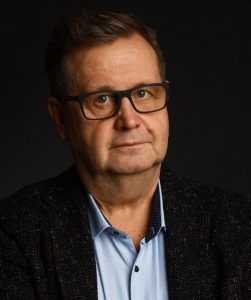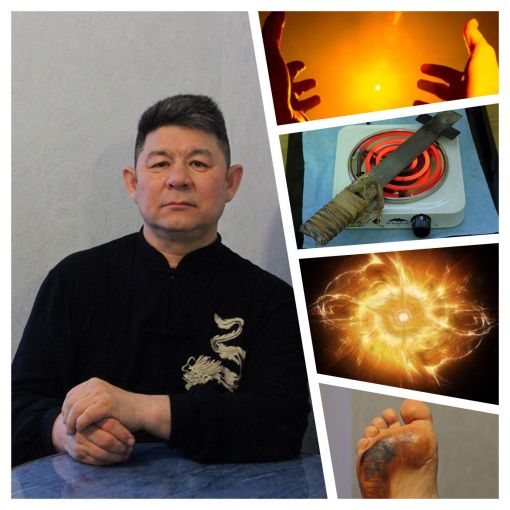DEALING WITH LOSS: A NEW QUALITY LIFE.
Features of the method by Alexander Ryazantsev.

Prof. A.N. Ryazantsev, Ph.D. , Professor
A.N. Ryazantsev, Professor of IUFS, PhD in Philosophy, Practical Psychologist, Gestalt Consultant, System Consultant, Training Therapist, Business Coach; Founder of the School of Phenomenology, Founder and Director of the Institute for System Technologies and Consulting (ISTIK) in Saint Petersburg; Student of Heribert Döring-Meier; Full Member of the European Association of Supervisors EASC since 2010; PhD in Psychology (Oxford Education Network); St. Petersburg, Russia, aryazancevru@yandex.ru.
Annotation: a research article about the author’s phenomenological integrated approach – Psychology of systemic phenomena, applied to consult people going through loss. The approach was developed and patented at the International University of Intellectual Property by Alexander Ryazantsev in 2019. In this technology of work, a person is regarded as a set of events and phenomena not experienced in his generic system. Alexander developed an algorithm for the systemic formation of a person’s being through his emotional experience of events and the realization of his authenticity. If we take the process of going through loss, then a person, in the course of working with him, moves from disagreement, feelings of guilt, anger, pain to a new quality of life: his emotional state becomes much better and a new meaning of life appears. This approach has been repeatedly applied in the practice of counseling and has proven to be effective.
Key words: psychology of systemic phenomena, phenomenological integrated approach, psychological method, author’s method, emotional state of people, loss, experience of loss, acute grief, psychological practice, psychology.
A bereaved person may be caught up in a state of grief that is extremely difficult to escape from. His quality of existence deteriorates, new meanings of life are not found, his health collapses, his interests in other people and in society are lost. He gradually narrows the scope of his activities and may become depressed. However, many well-known or classical psychological methods bring ineffective results. In working with losses, in many methods there is a concept of the periodicity of experiencing stages, but there is no natural dependence with certain emotions.
For instance, psychoanalysis, being the basic psychological theory, first of all, offers to bring the experience from the unconscious into consciousness. This is also necessary in the case of loss. But what a person is supposed to do if he’s later totally overwhelmed with grief?
In Gestalt psychology there is no notion of “adopted feelings”, which belongs to the system-phenomenological approach. Gestalt deals with human feelings and does not take into account that they can be passed on by ancestors, but lived as their own.
Cognitive-behavioral therapy, working with attitudes, ideas of a person about himself and the world, certainly helps to look at ourselves from the outside and already consciously choose the way of life. But it hardly takes into account emotions, which are enormous power.
Transactional analysis can teach you to manage ego states: child, parent, adult, but it is more focused on the ability to build relationships with other people, to be consciously adequate. And when dealing with loss, it is necessary to pay more attention to the interaction between the person and his own inner world, which has been traumatized.
My own 30 years of experience in consulting people has led me to these conclusions. I have deduced the natural dependences of the stages of grief with the experience of a certain emotion within the framework of my own practice and is ready to share it in the technology of work with losses that I offer.
My author’s technology has proven its value in psychological practice and has advanced the work of therapists in the area of projections, introjects, and work with basic emotions. According to it, my Institute of System Technologies and Consulting has developed and annually conducts training programs for specialists in order to improve their qualifications and professional retraining. I have consulted over 100,000 people in practice and saw the effectiveness of my phenomenological integrated approach.
The relevance of the research of the phenomenon of loss is due to the emergence of new methods of counseling, which have not been sufficiently examined in psychological practice. Unfortunately, people often lose their loved ones, there are massive tragedies. It is necessary to provide quality support and assistance to those who are in a state of mourning, experiencing loss. In this, the method of phenomenological integrated counseling can be useful, which allows you to work with the feelings and phenomena of a person. This method has already been used by me in my work with the mass grief in Vidyaevo (submarine “Kursk”, 2000)
Object of research: author’s technology that allows you to consult and provide assistance in social adaptation of people experiencing a state of loss and acute grief.
Subject of research: the emotional and psychological state of people experiencing a state of loss and acute grief.
Research hypothesis: the phenomenological integrated method of counseling provides effective psychological and motivational support for the socialization of people in a state of mourning. In addition, the method forms motivational, volitional, emotional qualities in this category of people and helps to apply them in current life conditions.
After the research of the phenomenological integrated approach in counseling, it was concluded that it is highly effective.
When undergoing rehabilitation programs and psychotherapeutic sessions using my technology for 9 years of research, a positive result was found in 83% of clients.
The diagnostic criteria are the following:
self-esteem, decision making, anxiety,
resistance to stress, consistency in building out plans in accordance with the decisions made for self-realization before and after loss.
The results of many years of practice in my author’s approach to counseling can be considered the fact that people who came to me for advice left it with a positive result, their quality of life changed dramatically.
The research data are presented in the table:
| Year of research | Number of subjects | Anxiety: before work / after consultation | Stress level
before / after |
Depressive symptoms
before after |
| 2010-2015 | 250 people | High 93% / Moderate 57%/ Low 46% |
91%/41% |
47%/23% |
| 2016 | 170 people | High 91%/ Moderate 51%/ Low 40% | 89%/37% | 51%/34% |
| 2017
|
175 people | High 95% / Moderate 59%/ Low 36% | 87%/32% | 89%/35% |
| 2018 | 195 people | High 94% / Moderate 53%/ Low 41% | 93%/41% | 90%/36% |
To conduct the study, we used:
- Test for the level of ANXIETY C. Spielberger-Khanin.
This test is a reliable informative way of self-assessment of the level of anxiety at the moment (reactive anxiety as a state) and personal anxiety (as a stable characteristic of a person).
- Test for STRESS and DEPRESSION, developed by Charles Spielberger, and adapted by O.M. Radek
This test is designed to diagnose nervous and emotional tension. It is a classic survey, consisting of 80 questions, forming 8 different scales:
- Intensity of curiosity (INTEREST)
- The intensity of aggression (AGGRESSION)
- Intensity of alarm (ALARM)
- Intensity of depression (DEPRESSION)
- Frequency of curiosity (CURIOUSNESS)
- Frequency of aggression (AGGRESSION)
- Alarm frequency (ANXIETY)
- Frequency of depression (DEPRESSION)
What makes my technology unique?
For over 30 years I have been working with feelings and behavioral phenomena.
Everyone is aware of 11 basic emotions, which were described by Carroll E. Izard. They are naturally embedded in us and are “read” by us unconsciously. They have long been studied and described in textbooks on the psychology of emotions. However, not a single textbook describes the process of “life” of each emotion and the accompanying secondary emotions, which I call “retinue”.
Each emotion in a particular life situation in a person has one basic emotion and, if it is not experienced, there are at least three secondary emotions in the “entourage” that do not let the person into pain and become the guardian of the safety of his psyche.
The following diagram illustrates the process of a person’s experience of loss:

In the process of counseling, a psychologist needs to bring the person into agreement with the loss. To agree is to experience heartache. To experience heartache is to face bitter sorrow. And when faced with bitter sadness, one must get angry. This mechanism is so strong and unusual for the person himself that, of course, he does not want to meet with it.
From disagreement, sorrow arises with pity, and from the absence of anger, resentment and helplessness, and, of course, guilt arise. Guilt strongly binds a person to the mourning process. It is difficult for a person to determine what exactly is his guilt before the loss and before himself. The guilt before oneself is more complex, it keeps a person in a circle of sadness, pain, loss.
Thanks to my experience of working with people experiencing grief, 78% turned out that as soon as a person said: “I forgive myself,” – and knew why, and could express this guilt and experience it during our meetings with him, find and express forgiveness to himself for this self-imputed guilt, his life again became free, open, filled. The quality of life changed instantly. One person came to a consultation or constellation, and another left, with a different facial expression and experiencing different meta-feelings of love and harmony. He was beginning to feel differently. This could be traced by the lightness in the body, the desire to create, look for meetings, worry less about what will happen next, make clear, clear plans for the future.
The product and result of my practical experience, research, search for forms of work with people who have suffered a loss, was my own book “Life – as a series of losses and gains.” It describes an algorithm for living losses of a different order. It is useful for psychologists and counselors, and medical workers, rescue services, and ordinary people.



